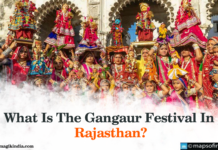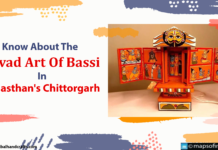India since time immemorial had attracted invaders and traders because of immense wealth, jewelry, gemstones etc. Also history of jewelry in India is not new but dated back to Indus Valley civilization. But because of well documented information and magnificent designs, contribution of Mughals in this field is unmatchable. Also Mughal period was the most fascinating period in terms of jewelry designs. The extravagant jewelry created by them had different subjects like creepers, flowers, birds and foliage. Color and motifs were the main part of their jewelry. Mughals had also started wearing gemstones and navratnas for luck that become very popular.
Mughals ruled India for almost three centuries and during that period they had influenced almost all the facets of life like art and architecture, cuisines, palaces or jewelry. Yes, Mughal jewelry was one of the most dominant parts of their tradition. Royal members of the family including both men and women used to display their wealth and status by wearing heavy jewelry such as jeweled turban, toe-rings and necklaces etc.
Mughal rule started during 16th century and throughout their ruling period art of jewelry was given a due importance. Jewelry designs during that period were influenced by various cultures and religions. Like it was the strategy of Mughal ruler, especially Akbar to marry Rajput women so there was an amalgamation of Mughal as well as Rajput (Hindu) jewelry style. Hindu jewelry was predominated by figures of gods and ancient scriptures. But any kind of figure was prohibited in Islam so floral images gained prominence. Even the European Fashion of 17th century especially jewelry in Renaissance era to some extent had influenced the Mughal jewelry. Overall use of precious stones and intricate carvings are the two significant aspects of Mughal jewelry.
Mughals conquered almost the entire India. Therefore area under their influence was not only confined to north India but also Gujarat, Madhya Pradesh, Orissa and Andhra Pradesh. One can also see the influence of Mughal jewelry in these regions and states of India.
Precious gemstones used in Mughal Jewelry
Precious gemstones such as diamond, emerald, ruby, kundan, polki, jade, pearls, tourmaline, topaz, and many other qualities of beads were used to make Mughal jewelry.
Features of Mughal Jewelry
- During the rule of Akbar, Mughal Jewelry showed the combination of Iranian and Hindu art as the emperor had his cultural roots in Iran. Indian gold work and floral designs of Middle Eastern regions can be seen on Mughal jewelry.
- Under Jahangir’s rule there was seen a transformation in the style of jewelry. The upright feather plume worn at the front of turban by Akbar was now replaced with a large dropping pearl.
- In spite of ruler, to make Mughal jewelry heavy gold base was used. But occasionally instead of gold, silver plated with gold and other metallic bases were also used.
- In Mughal jewelry design combination of crescent and stem was very prominent. Earrings were made in crescent shape covering almost the entire ear with a small stem at the top of it. Lower side of the crescent used to have a suspended fish to which bunch of pearls were attached.
- Heavy stonework and Kundan jewelry flourished during Mughal period. Precious gemstones were carefully cut and given a shape to get fit into pure gold.
- Elaborate enameling or meenakari – floral finishes were the most prominent designs that were made with the process of enameling.
- Jadau or engraved jewelry was another very popular form of jewelry during Mughal period. To make this kind of jewelry skilled craftsmen used to work in a team. The basic design was made by Chiterias, engraving and hole making was done by Ghaarias, enameling or meenakari was done by enameler, kundan and gold was taken care by goldsmith.
No doubt that contribution of Mughals in jewelry designs and techniques of making jewelry is immense. Color, combination, engraving and intricate designs of Mughal jewelry is not found in any other style of jewelry which is still liked and wished by every Indian woman.



